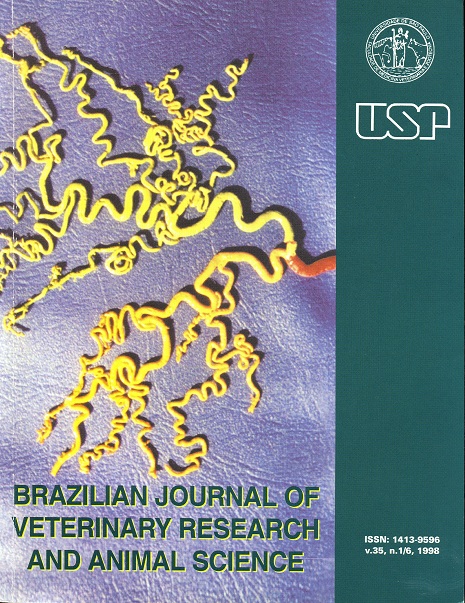Diagnostic laparoscopy in dogs: analysis of 27 cases
DOI:
https://doi.org/10.1590/S1413-95961998000300006Keywords:
Laparoscopy, Surgery, DogsAbstract
Laparoscopy was used for the visualization of abdominal viscera of 27 dogs afflicted with different pathologies. In all cases general anesthesia was applied. An incision was made on the ventral midline approximately 1cm caudal to the navel. At this point a trocar was introduced for the production of pneumoperitoneum. After that, the optical probe was introduced for inspection of the abdominal cavity. The different organs were visually identified by their external morphology. Moreover, the exam also allowed the identification of different pathologies. In two cases of splenic and pancreatic atrophy, as well as in case of hepatic necrosis the laparoscopic examination was instrumental for the understanding of the disease, leading to a final diagnostic confirmed by histopathological analysis. The presence of hepato-frenic adhesion was immediately identified in one case, helping in the planning of corrective surgery. Cases of piometritis in initial stages were identified thanks to the laparoscopic exam, since biochemical and radiological data was highly inconclusive. The laparoscopy determined the impossibility of surgical removal of two hepatic tumors and one case of intestinal neoplasia. The results most likely influenced the request for euthanasia by the owners. The present observations agree with citations in which laparoscopy cannot avoid major surgery, however it gives valuable information regarding the conditions of the tissues and the extension of the lesions.Downloads
Download data is not yet available.
Downloads
Published
1998-01-01
Issue
Section
VETERINARY MEDICINE
License
The journal content is authorized under the Creative Commons BY-NC-SA license (summary of the license: https://
How to Cite
1.
Schossler JE. Diagnostic laparoscopy in dogs: analysis of 27 cases. Braz. J. Vet. Res. Anim. Sci. [Internet]. 1998 Jan. 1 [cited 2024 Apr. 19];35(3):123-6. Available from: https://revistas.usp.br/bjvras/article/view/5707





